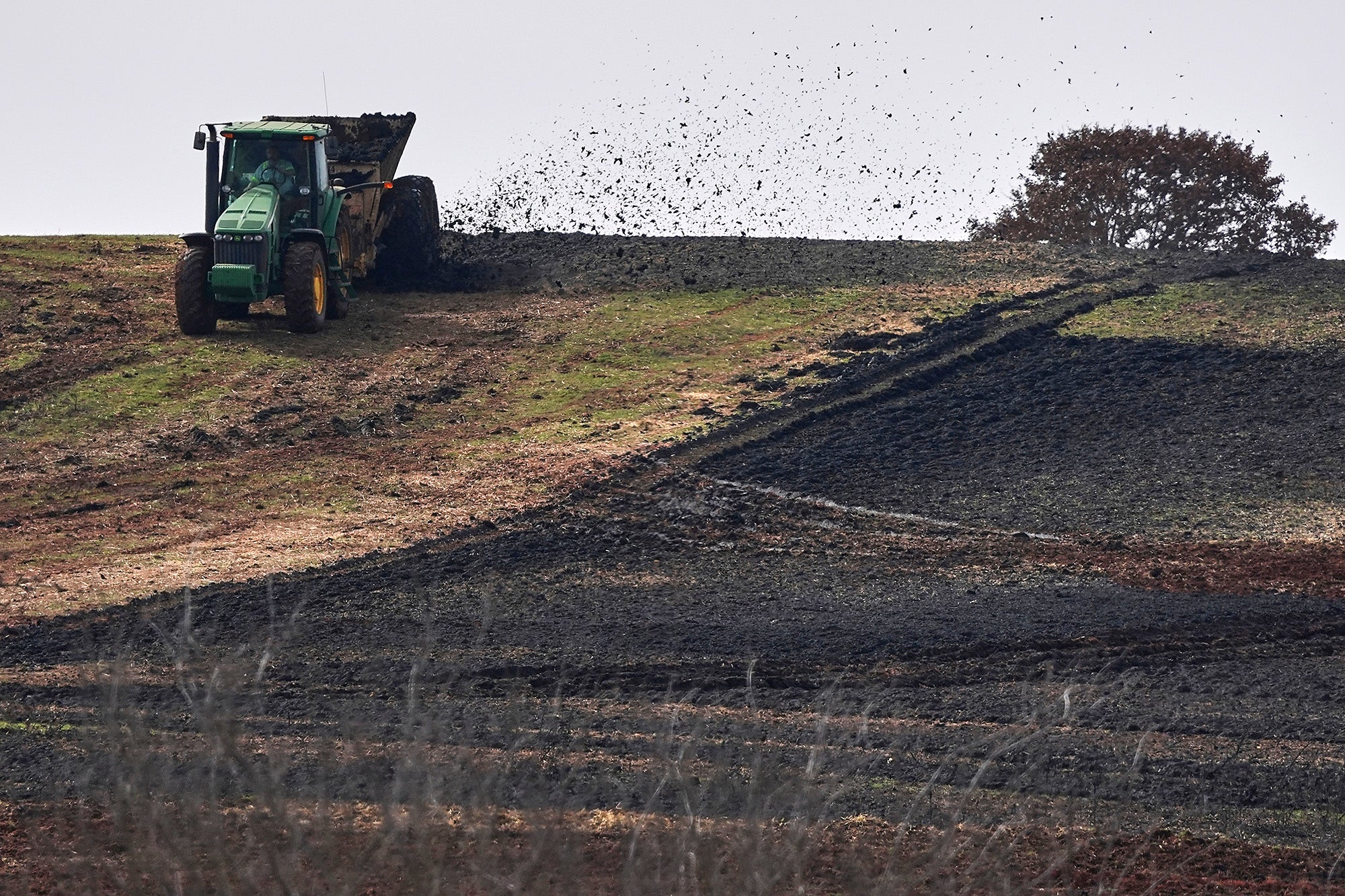Federal Action on PFAS-Contaminated Sewage Sludge Is Long Overdue
It is past time to address the crisis of PFAS-contaminated farmland. EPA must promptly finalize its risk assessment for PFOA and PFOS in sewage sludge, publish appropriate regulations, and begin evaluating risks associated with other PFAS chemicals in sludge.
Every year, millions of tons of sewage sludge are spread on an estimated 70 million acres of U.S. farmland, along with gardens and golf courses across the country. The federal government and state agencies have encouraged the use of sludge as fertilizer for decades, promoting it as cheap, sustainable, and safe. Yet, growing evidence makes clear that the risks of land applying sewage sludge far outweigh its benefits.
Scientists and community members have long warned that sludge can contain a host of harmful substances, such as pathogens, heavy metals, and toxic chemicals. In 2000, the Office of Inspector General (OIG) for the U.S. Environmental Protection Agency (EPA) published an audit concluding that, “while EPA promotes [the] land application [of sewage sludge], EPA cannot assure the public that current land application practices are protective of human health and the environment.” Almost 20 years later, the OIG’s concerns remain unchanged: a 2018 audit again found that “EPA’s controls over the land application of sewage sludge . . . may not fully protect human health and the environment.”
In fact, there is increasing cause for concern about the land application of sewage sludge. A growing body of evidence makes clear that sludge often contains PFAS, as EPA has known since at least 2003. PFAS — or per- and polyfluoroalkyl substances — are commonly referred to as “forever chemicals” because they do not break down but, instead, build up in our bodies and the environment. Exposure to PFAS has been linked to various health problems, including cancer, decreased immune response, and decreased fertility. Even though manufacturers recognized that PFAS were toxic as early as the 1950s, many of these chemicals continue to be used in cookware, food packaging, and other everyday products. As a result of industrial and household use, PFAS enter wastewater, and because treatment technologies typically do not destroy PFAS, these chemicals persist in sludge.
Once sewage sludge is spread on farmland, PFAS can contaminate water and soil, as well as crops, other plants, farmed animals, and wildlife. In fact, a recent study confirmed that sewage sludge is a major source of PFAS in rivers and creeks across the country. PFAS contamination also puts farm families, neighbors, and consumers at risk. In 2016, a Maine dairy farmer discovered that PFAS from sludge had contaminated his water, forage crops, milk, and cows; his farm has since gone out of business. In 2020, a Michigan cattle farmer was forced to shut down after PFAS from sludge contaminated his soil and cattle. Evidence of sludge-related PFAS contamination has also been uncovered in Texas, South Carolina, and Tennessee. The full extent of harm is not yet known.
Although EPA has acknowledged that PFAS and PFAS-contaminated sludge pose serious risks, it has so far failed to take appropriate action. Earlier this year, EPA released a draft sewage sludge risk assessment for just two PFAS chemicals, PFOA and PFOS, even though over 150 PFAS chemicals have been detected in sludge worldwide. As Earthjustice explained in comments with the Natural Resources Defense Council and 40 other allies, submitted on August 14, 2025, EPA’s risk assessment underestimated risks by orders of magnitude — and nonetheless determined that land application of sludge containing barely detectible amounts of PFOA and PFOS results in unacceptable health risks for farm families. But EPA has yet to finalize its risk assessment, let alone adopt health-protective regulations.
To the contrary, EPA extended the deadline for public comments on its draft risk assessment by months, and Congress currently is considering an appropriations rider that would restrict federal funds from being used to finalize, implement, and enforce the draft risk assessment. And to make matters worse, the Trump administration is gutting EPA, eliminating existing PFAS controls, and defunding research into PFAS contamination of farms.
To fill the void left by EPA, some states have made concerted — and costly — efforts to address sludge-related contamination on their own. Maine has been an early leader as the first state to ban the land application of sludge and systematically test farms. In 2025, at least 13 states have proposed bills to regulate sludge, research clean-up strategies, and support farmers. However, many states continue to encourage land application of sludge without appropriate safeguards.
In response, communities and local governments have organized in support of common-sense regulation of sewage sludge land application. Earthjustice has worked with local governments in New York and Pennsylvania to shape and defend local restrictions. To block these efforts, some proponents of sludge land application have turned to so-called Right-to-Farm laws. But Right-to-Farm laws are meant to preserve agricultural land. Using these laws to support sludge spreading — which renders land unsuitable for agriculture — runs directly counter to their purpose.
It is past time to address the crisis of PFAS-contaminated farmland. EPA must promptly finalize its risk assessment for PFOA and PFOS in sewage sludge, publish appropriate regulations, and begin evaluating risks associated with other PFAS chemicals in sludge. Until the federal government and state governments take appropriate action, local governments must be allowed to act to protect residents and the environment. We must support farming communities and protect our food system by ensuring that the corporations responsible for releasing PFAS into the environment change their practices and assist in clean-up.
Earthjustice’s Sustainable Food and Farming program aims to make our nation’s food system safer and more climate friendly.
